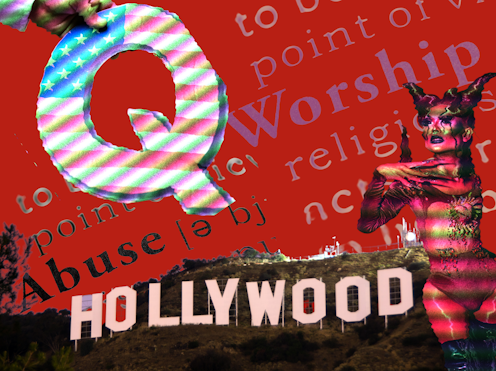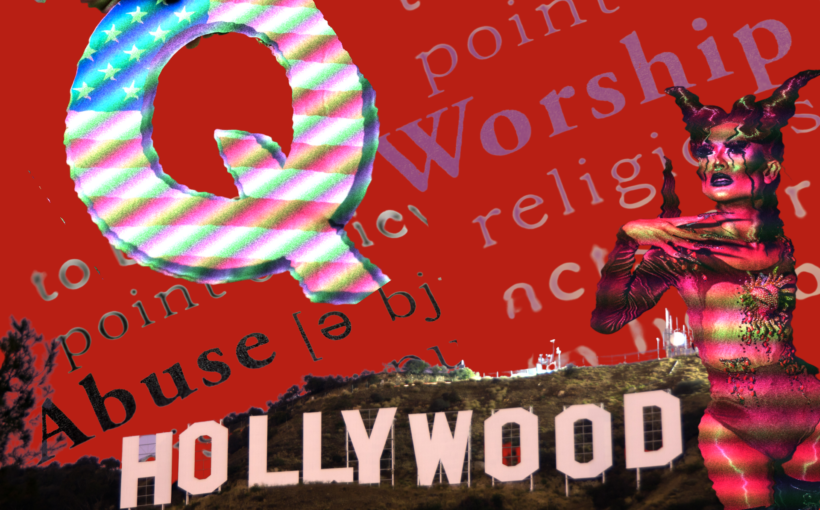
Earlier this year the non-binary singer-songwriter, Sam Smith, performed their song Unholy, at the Grammys. Dressed in a red devil-horned top hat and latex costume, the performance drew upon popular occult and gothic aesthetics. And it attracted a huge amount of criticism for the supposed promotion of satanic imagery.
Conspiracy theorists alleged that the performance was, in fact, a real, satanic ritual orchestrated by an elite cult of Hollywood satanists. Its supposed aim? To morally subvert society by brainwashing and indoctrinating young people.
Only a few months prior, a similar mass online panic had taken hold in the form of the Balenciaga scandal – with conspiracy theorists claiming that the fashion brand was secretly engaging in child trafficking and satanic ritual abuse.
This was after photographs for its latest campaign featured children holding teddy bear bags that appeared to be dressed in bondage fetish-wear.
These are just the latest in a string of satanic conspiracy theories, from the 2014 Hampstead hoax, which involved false allegations of a satanic paedophile ring operating out of a north London school, to the rise of the now infamous QAnon movement, where supporters believe that Satan-worshipping elites are trying to take over society.
Satanism scares
In the UK and further afield, there’s a long history of claims that secret, Satan-worshipping cults exist that ritualistically abuse and sacrifice children. Emerging in the form of moral panics known as “satanism scares”, it’s possible to trace these rumours and myths back to second-century Rome. Yet they really rose to prominence during the Middle Ages.
This satanic mythology has often been used as a way to demonise Jewish communities. In particular, they’ve often involved false allegations that Jewish people use the blood of non-Jewish – usually Christian – children for ritual purposes.
The European witch-hunts which happened during the 15th, 16th and 17th centuries also incorporated claims of devil-worship and child sacrifice.
While accusations of satanic abuse have repeatedly been found to be unsubstantiated and allegations debunked, these rumours and conspiracy theories can cause very real harm.
False satanic abuse allegations have resulted in harassment, death threats and online attacks. In one instance a child was kidnapped after a group falsely believed they were the victim of satanic ritual abuse. And there have even been death sentences (later overturned), in the case one 1990s murder trial in the US.
Indeed, satanism scares can be considered a form of witch-hunt. In the 1980s and 1990s there was a mass satanism scare in the US and UK which became known as the “satanic panic”.
This episode saw many people falsely accused, arrested and at times convicted of satanic abuse. To this day, courts are still working through exonerating those falsely accused.
In one case, a US couple spent 21 years in prison after being found guilty of satanic ritual abuse. Their conviction was eventually overturned due to the faulty witness testimony.
The most famous case was the McMartin preschool trial, which is still the longest-running and most expensive trial in US history. It followed false allegations that hundreds of children had been sexually abused and involved in satanic rituals at a California preschool. It led to fears that children and wider society were under attack from satanic forces.
The satanic panic gained momentum from religious TV channels, public authorities and perhaps most prominently from tabloid media. In both the US and the UK it built upon preexisting societal moral panics relating to cults and child abuse, as well as drawing upon existing homophobic narratives.
Today’s theories
Conspiracy theories appear to reemerge at times of crisis, such as the COVID pandemic and terror attacks. They are often used as a way to scapegoat specific groups considered responsible for widespread societal anxieties.
Satanic cult conspiracy theories today also integrate themselves within other conspiracy theories. Following the pandemic, anti-vax narratives and COVID-19 conspiracy theories are often incorporated.
Some of these allege that the vaccine is the “mark of the beast”, or an attempt by supposed “satanic elites” to control the masses.
Such claims have also latched onto homophobic and transphobic narratives, intertwining allegations of satanic ritual abuse with existing right-wing ideas that attempt to associate LGBTQ+ communities with grooming and paedophilia.
They also incorporate “new world order” conspiracies, which are often explicitly antisemitic. These allege the existence of a powerful network of elites with a hidden, subversive satanic agenda.
While such allegations may appear far-fetched – and it may be difficult to understand how people can believe in them – at their core, satanism scares centre around two very common enemies: Satan and child abusers. In this sense, they act as a kind of demonology blueprint.
Many people may first become involved with these theories because they have genuine concerns about child abuse or “cults”. But these initial concerns can then be manipulated by conspiracy theory rhetoric and online misinformation.
Beyond simply affecting those falsely accused, these conspiracy theories can also be emotionally damaging for those caught up in them and their families.
The image of satanism that these theories propose draws on sensationalised occult stereotypes along with horror aesthetics. It lumps them together with notions of witchcraft, satanism, the paranormal and ceremonial occultism to create an amalgamated image of evil.
This is important because ultimately, understanding the ways that “satanic panic” can piggyback off of and weaponise popular political and social issues is crucial in recognising and removing their harmful effects.
![]()
Bethan Juliet Oake receives funding from the Arts and Humanities Research Council (AHRC) via the White Rose College of the Arts & Humanities (WRoCAH).



